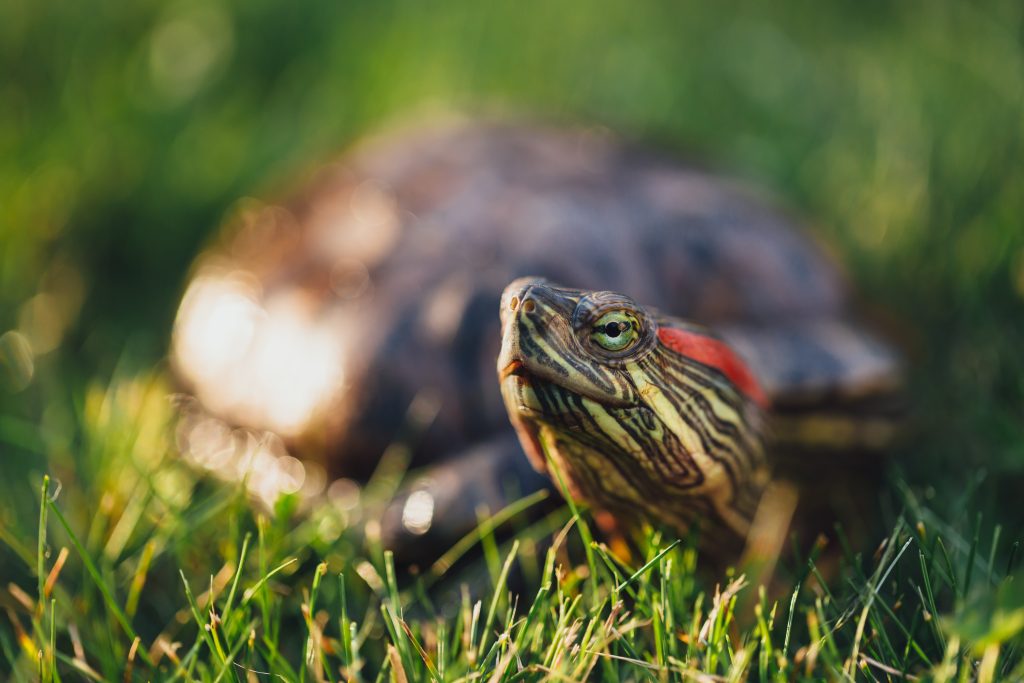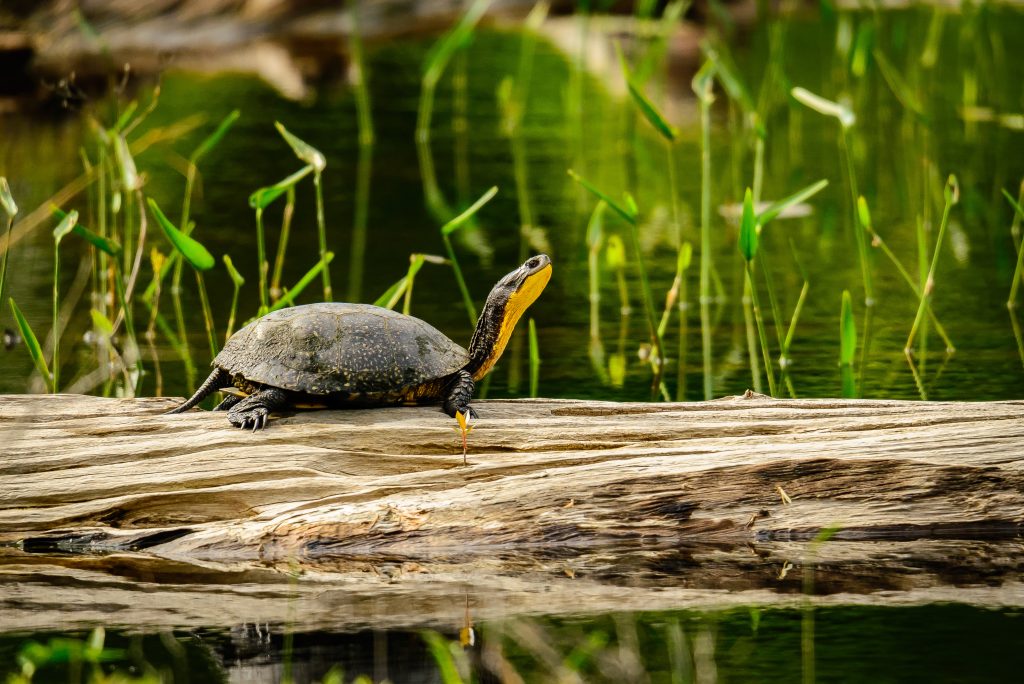Red-eared sliders are one of the most recognizable turtles in the world — and one of the most misunderstood in Ontario. With their bright red “ears” and sunny basking habits, these turtles are often seen lounging on logs in ponds and rivers. But unlike Ontario’s native turtles, red-eared sliders are not supposed to be here — and their presence is causing serious problems for local wildlife.
Let’s dive into who they are, why they’re here, and what you can do to help.
What Is a Red-Eared Slider?
The red-eared slider (Trachemys scripta elegans) is a non-native species originally from the southeastern United States. They are popular in the pet trade because they’re small, cute, and seemingly easy to care for — at first. But they can live for 20 to 40 years, grow much larger than people expect (up to 30 cm long), and require very specific care. Sadly, many people who buy them as pets release them into local waterways when they become too much to handle.
These released turtles can survive Ontario’s climate, and that’s where the trouble begins.
Why Are Red-Eared Sliders a Problem in Ontario?
Though they seem harmless, red-eared sliders can threaten Ontario’s native turtles — all of which are already at risk.
Here’s how:
- 🥚 Competition for Nesting Sites: Red-eared sliders compete with native turtles for limited nesting areas and basking spots.
- 🍽️ Food Competition: They eat many of the same foods as native species, reducing available resources.
- 💔 Disease Spread: Released pet sliders may carry diseases or parasites that can infect wild turtle populations.
- 🐣 Disrupting Local Ecosystems: As an invasive species, sliders can throw off the delicate balance of wetland ecosystems, affecting plants, insects, fish, amphibians, and other reptiles.
It may feel like a kind thing to “set them free,” but in reality, releasing red-eared sliders into the wild is both illegal and ecologically harmful.
What Should You Do if You See a Red-Eared Slider in the Wild?
If you spot a red-eared slider in a local park, pond, or wetland:
- Take a photo if possible, especially of the turtle’s head and shell markings.
- Record the location and date.
- Report it to a local conservation authority or wildlife centre. You can also log it on iNaturalist, which helps researchers track invasive species.
If the turtle is injured, in danger, or seems recently released (e.g. very tame or found far from water), contact a licensed wildlife rehabilitator or reptile rescue for guidance. Do not attempt to keep it or relocate it yourself.
What If You Already Have One as a Pet?
If you currently have a red-eared slider at home, you’re not alone. What matters most is that you do not release it into the wild. Instead, if you’re no longer able to care for your turtle, contact one of the following reptile-friendly organizations in Ontario:
🐢 Reptile Rescues and Sanctuaries in Ontario
- Little RES Q – Pefferlaw, ON
Ontario’s first registered reptile rescue dedicated to rehoming and rehabilitating turtles, especially red-eared sliders. - Audrey’s Legacy Turtle Sanctuary – Ontario
A sanctuary run by Little RES Q that provides long-term care to turtles in a safe, natural setting. - Ontario Reptile Rescue – East Garafraxa, ON
Accepts surrendered reptiles and amphibians and facilitates responsible adoption. - Vandermeer Nursery Turtle Sanctuary – Ajax, ON
Provides care and rehoming for red-eared sliders and other pet-trade turtles. Contact in advance to arrange drop-off. - Ontario Turtle Conservation Centre (OTCC) – Selwyn, ON
While focused on native turtles, OTCC can provide advice or referrals for invasive turtles like red-eared sliders. - Scales Nature Park – Oro-Medonte, ON
Offers reptile education and conservation programs. May be able to provide advice or support in unique situations.
⚠️ Important: Always call ahead before bringing in a turtle. These organizations often have waitlists or space limitations.
A Final Note: Think Before You Buy
Red-eared sliders aren’t temporary pets — they’re lifelong responsibilities. Their complex care needs, long lifespans, and environmental impact make them a poor choice for many families. Before purchasing one, consider adoption from a reputable rescue and educate yourself on what proper turtle care really entails.
Ontario’s ecosystems are already under pressure. Let’s protect what’s native, and take better care of what isn’t.


